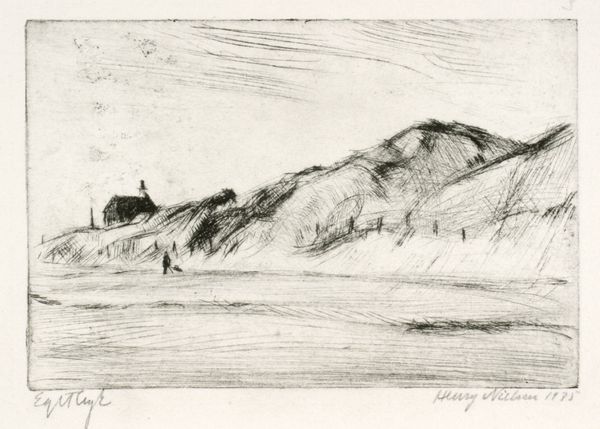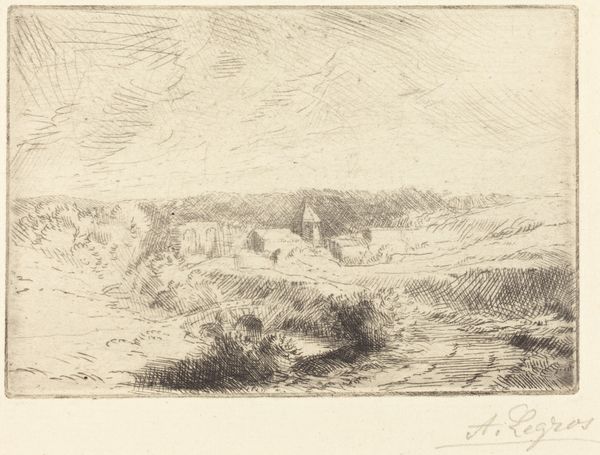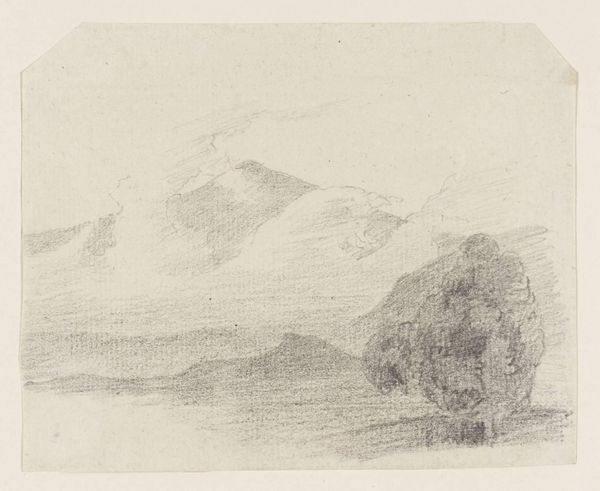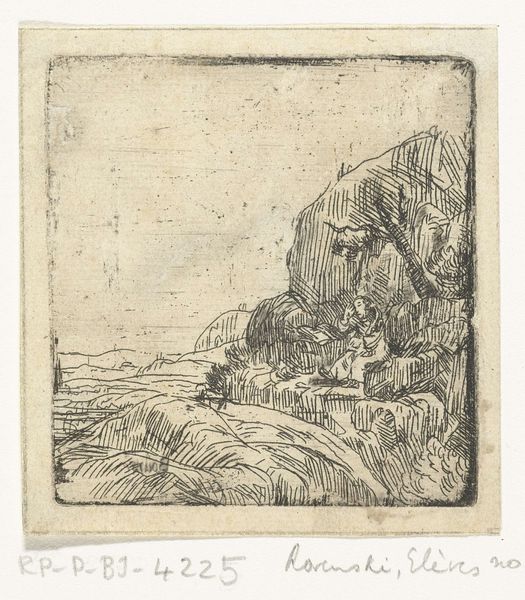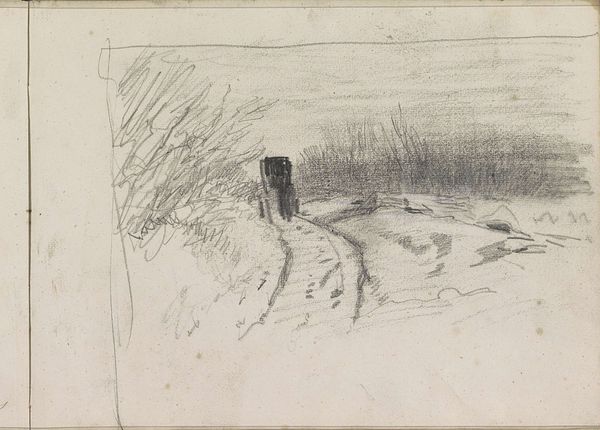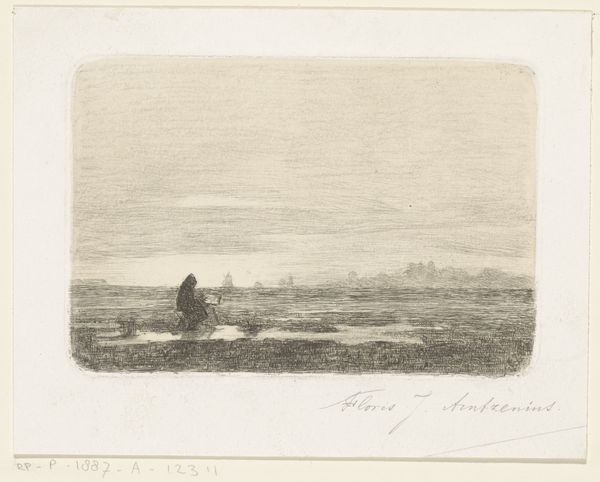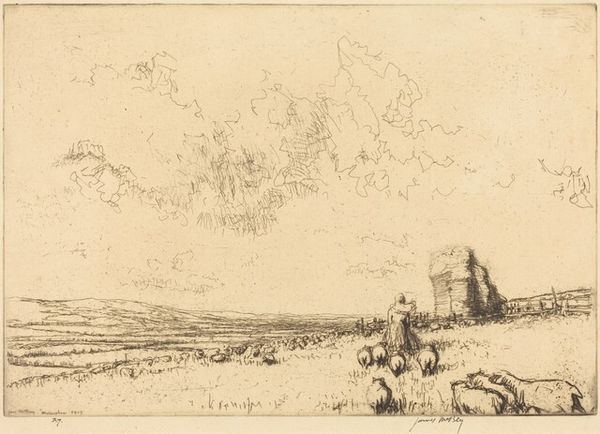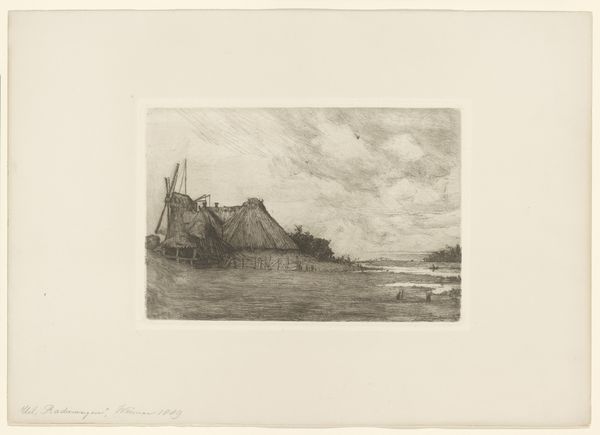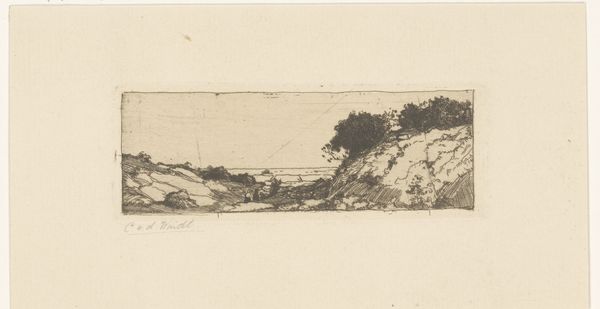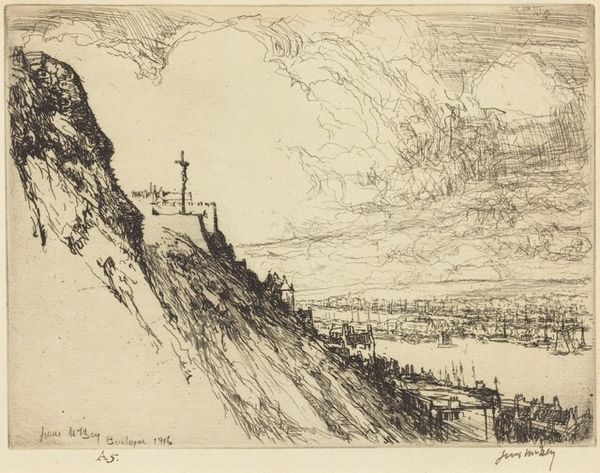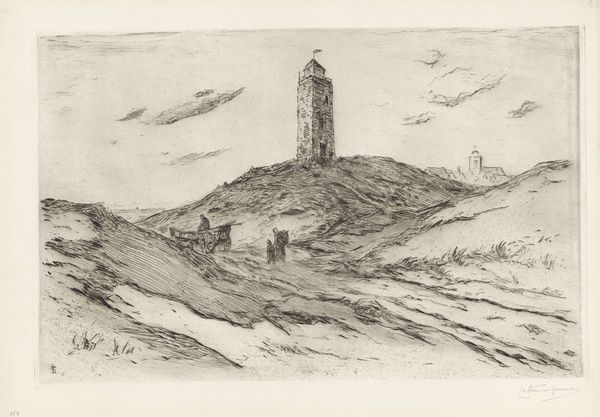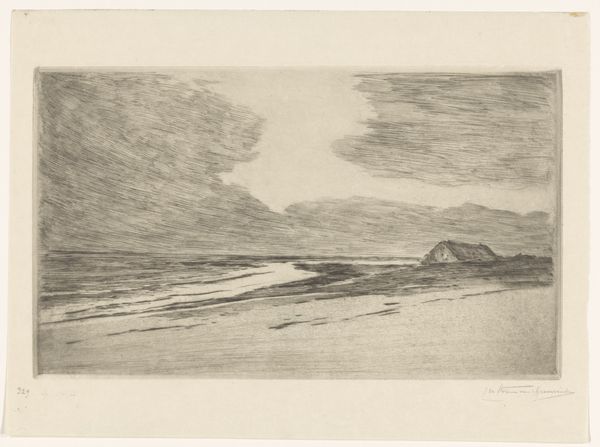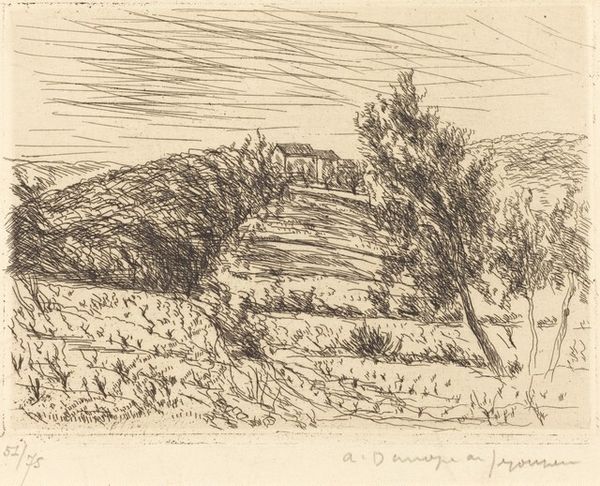
drawing, print, etching
#
drawing
# print
#
etching
#
landscape
Dimensions: height 88 mm, width 117 mm
Copyright: Rijks Museum: Open Domain
Editor: This is Elias Stark’s "Kasteel Chatelard bij Clarens," created as an etching in 1888. It's currently at the Rijksmuseum. It’s a fairly simple composition, a dark, textured hill rising to this cylindrical structure against a light, airy background of a mountain range and cloudy skies. What strikes me is how the etching technique almost obscures the landscape, creating a sense of mystery. How do you interpret this work? Curator: The "mystery," as you call it, speaks to me of the veiled histories often embedded within landscape art, and particularly those from the late 19th century. Consider, for instance, how such seemingly benign landscape depictions frequently overlooked the labor and social hierarchies that shaped these vistas. Can we read this "obscurity" as Stark's subtle acknowledgement of the complexities inherent in representing land and property? Who does the castle belong to and what does this representation omit in terms of the working class inhabitants of the landscape? Editor: That’s interesting. I hadn’t considered it as a commentary on social structure. I was mostly focused on the aesthetic qualities of the print itself. Curator: Precisely! It's important to consider how these aesthetics also participate in social and political narratives. The picturesque aesthetic, often associated with landscape painting, could simultaneously idealize rural life while obscuring social inequities. Thinking about the perspective of marginalized communities invites new meanings into what at first seemed like a conventional landscape. Editor: So, by exploring these issues, we can look at the art on display and engage in a deep social critique? Curator: Yes, and doing so honors those overlooked histories, prompting a richer understanding of art's role in shaping our perception of the world. Editor: This really adds depth to a seemingly simple landscape. I'll definitely approach these pieces with fresh eyes from now on. Curator: Wonderful. It is key that one's approach to a work such as this becomes less an observation and more of a dialogue!
Comments
No comments
Be the first to comment and join the conversation on the ultimate creative platform.
